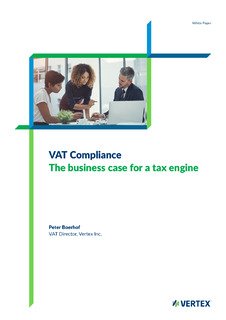Value Added Tax (VAT) compliance is not for free – but how do you create a business case for tax technology?
It is becoming increasingly important for businesses to remain in control of VAT given the legislative drivers behind this including increased reporting requirements imposed by various countries, increased data analysis capabilities and exchange of information, and a shift in Tax Control Framework discussions towards indirect tax.
Given that the aggregate of input and output VAT can easily be 30% of your total revenue, businesses should already have quite a rigid control framework around one of your most substantial monetary flows, which is VAT.
One of the challenges in VAT is that the end-to-end process is scattered over various departments in your organization, starting with your master data team through procurement and sales, ending with accounts payable and finance. Every department has its responsibilities contributing to the company’s overall VAT position, but the question is if somebody owns the end-to-end VAT process. Even if not formally laid down in a Responsibility Matrix, most probably, the tax or VAT manager will be held accountable if something goes seriously wrong in the end-to-end VAT process.
Download our white paper learn more about:
- How tax automation can help improve compliance
- Comparison between alternative VAT calculation options
- Selling a tax engine to your stakeholders, including the quantitative and qualitative benefits
- Learn more about how automating your VAT processes can enhance processes from data gathering and validation to reconciliation, review, and sign-off for payment so you can meet today’s VAT requirements while having the ability to respond to tomorrow’s business opportunity with confidence.

